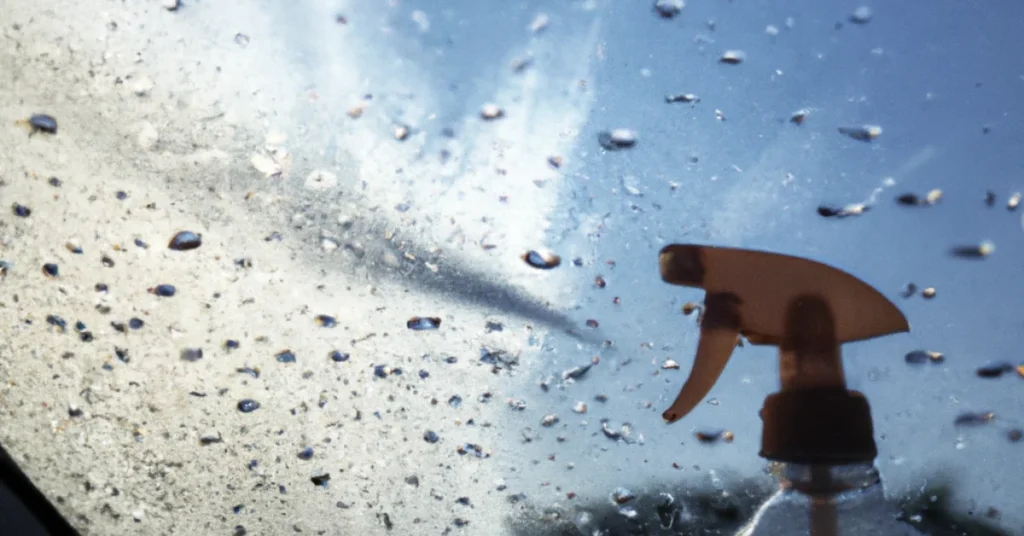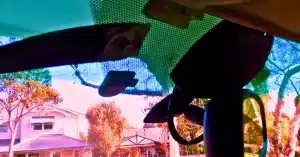You should always have a clear windshield in front of you when you are driving. If the windshield gets hazy, you might not see a vehicle coming from the opposite direction, or obstacles might pop out of nowhere.
So, to ensure safety on the road, you should clean your windshield from time to time. In this write-up, we will show you how to spray water on windshield to clean it.
How To Spray Water On Windshield?
You can spray water on the windshield by using the wiper switch on the wiper knob. It’s pretty easy to do. Let’s find out how we can clean the windshield by spraying water on the windshield with the wiper nozzles installed in front of the windshield.
Step 1:
First, wipe the windshield with a dry towel. Remove as much dirt as you can.
Step 2:
Now take a look underneath the hood and locate the washer fluid reservoir tank. Open its cap and see how much washer fluid is left there. In this case, we will only use water as washer fluid. However, you should not use water in winter as it could freeze.
A safer and more effective choice of windshield wiper fluid is a mixture of water and window cleaner. Add 25% window cleaner to 75% water. It’s best to use diluted cleaning agents to minimize abrasion risks.
You are good to go if there is enough water in the tank. If there isn’t, pour some water into the reservoir and put the cap back on.

Step 3:
Get inside the car and look for the windshield knob beside the steering column. There are usually two levers on the sides. One of them is for operating headlights, parking lights, and fog lights. The other one is for wiper control.
In most vehicles, the wiper control knob should be on the left side of your steering wheel. It should have a rectangular symbol, including a wiper sign on it.
Step 4:
In some vehicles, the wiper control knob has two parts in it. One part is for the front windshield wiper controls, and the other section is for the rear windshield wiper. All vehicles don’t come with a rear windshield wiper. If your car doesn’t have a rear windshield wiper, the wiper control knob will not have two sections.
If you want to activate the wiper nozzles on the front. Turn the dial on the knob to adjust the wiper mode, and then pull the knob down. The wipers will get activated. Now, pull the knob towards you to release the fluid. The fluid will keep coming out through the nozzles as long as you hold the lever.
For the back windshield wipers, activate it by turning the dial on the back windshield section on the knob and then pulling the lever down. Pull the lever towards you to release the wiper fluid just like you did for the front windshield.
Should You Use Distilled Water Or Tap Water For Cleaning The Windshield?
You can use both, but distilled water is obviously the better option. Tap waters come with impurities. So, frequently using tap water can lead to mineral buildup over your windshield over time. Distilled water doesn’t have any contaminants. So, it’s safer to use distilled water for washing your windshield.
Is Water Good Enough For Cleaning Windshields?
Water is the best choice for cleaning your windshield if you think about cost and eco-friendliness. That said, you can’t use it in winter as it has a low freezing point. Water freezes at 32℉, which is slightly below the average winter temperature in the US mainland (33.2 °F).
So, you will have to mix water with other cleaning agents to create a wiper fluid that can survive the chilling winter temperatures.
Is Wiper Fluid Better Than Water?
Yes, wiper fluid cleans better than water. Water lacks the cleaning force necessary to remove hardened dirt and grime and may even leave behind extra streaks that obscure your view. It can also make your windshield a haven for bacteria and mold.
Final Words
Now that you know how to spray water on windshield, make sure to clean the windshield every now and then. Follow the same procedure to squirt wiper fluid from the wiper nozzles.




